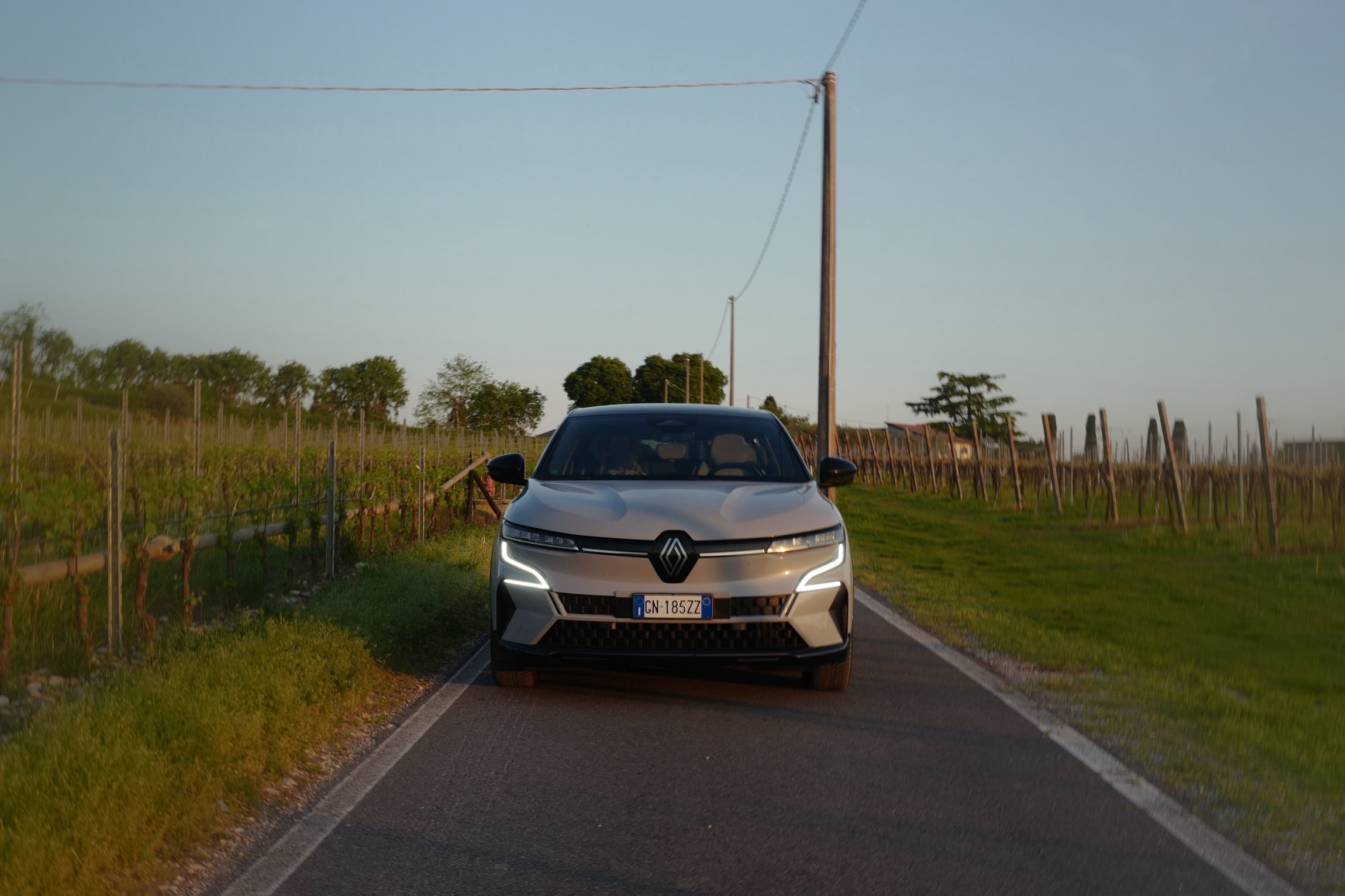Renault Mégane E-Tech (2024) Review
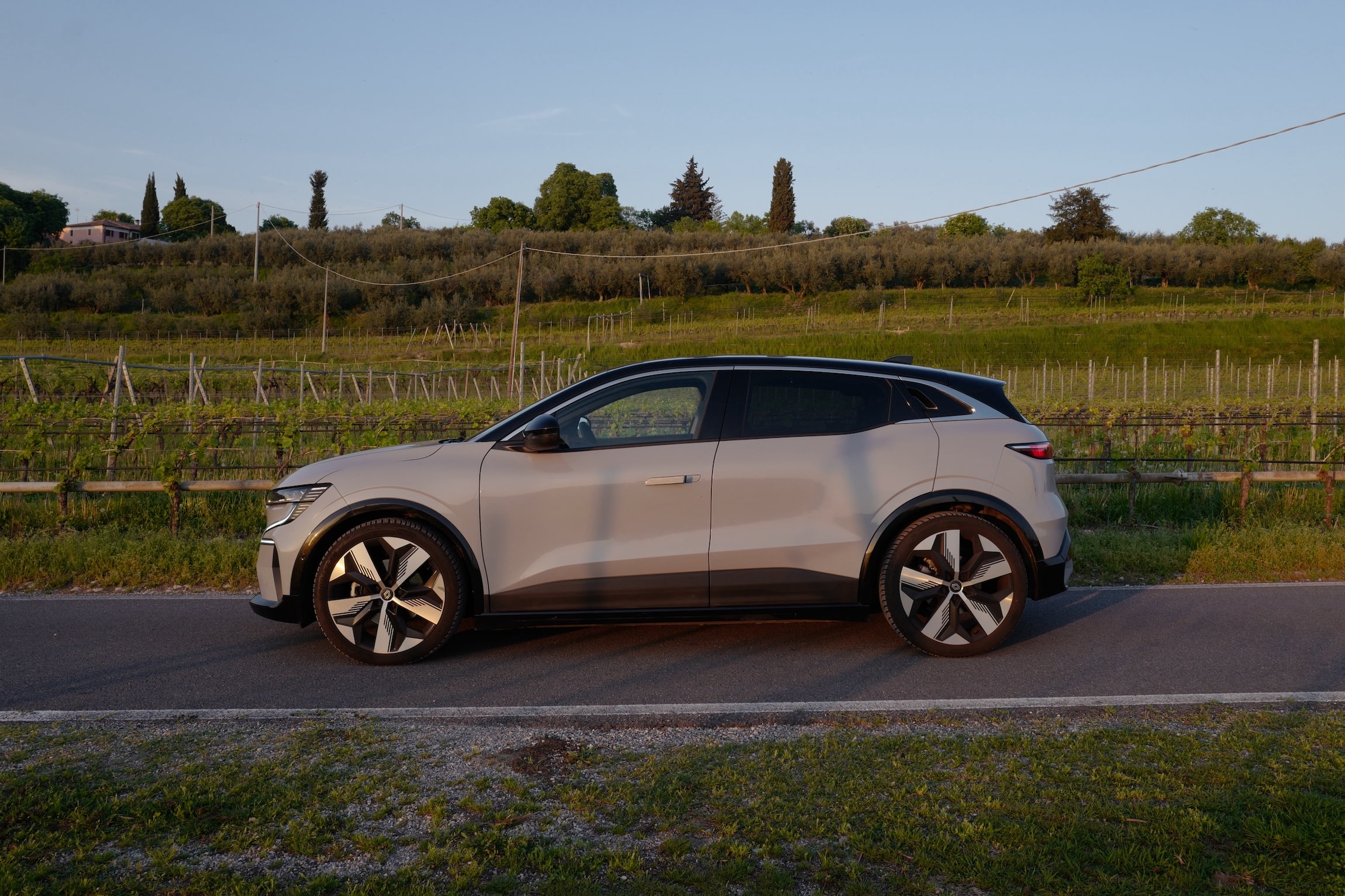
Renault has always had a strong connection to high tech. At his time at the company, in 1960, curve enthusiast Pierre Bézier began researching CAD and developed a tool for parametric surface modelling and Renault pioneered the development of cars with software in an age when computers received commands from hole-punched paper cards. Renault has been manufacturing Formula 1 engines since the 1980s, for themselves as well as other teams. The Renault Zoe dominated the European compact EV market for more than a decade.
Renault has been able to combine their learnings over the generations to package a unique automotive experience for just under 42.000 €.
More current models, like the electrified retro-futuristic R5 made an impact among fans of compact urban-focussed cars and the classic Quatrelle turned electric too, with production starting in 2025.
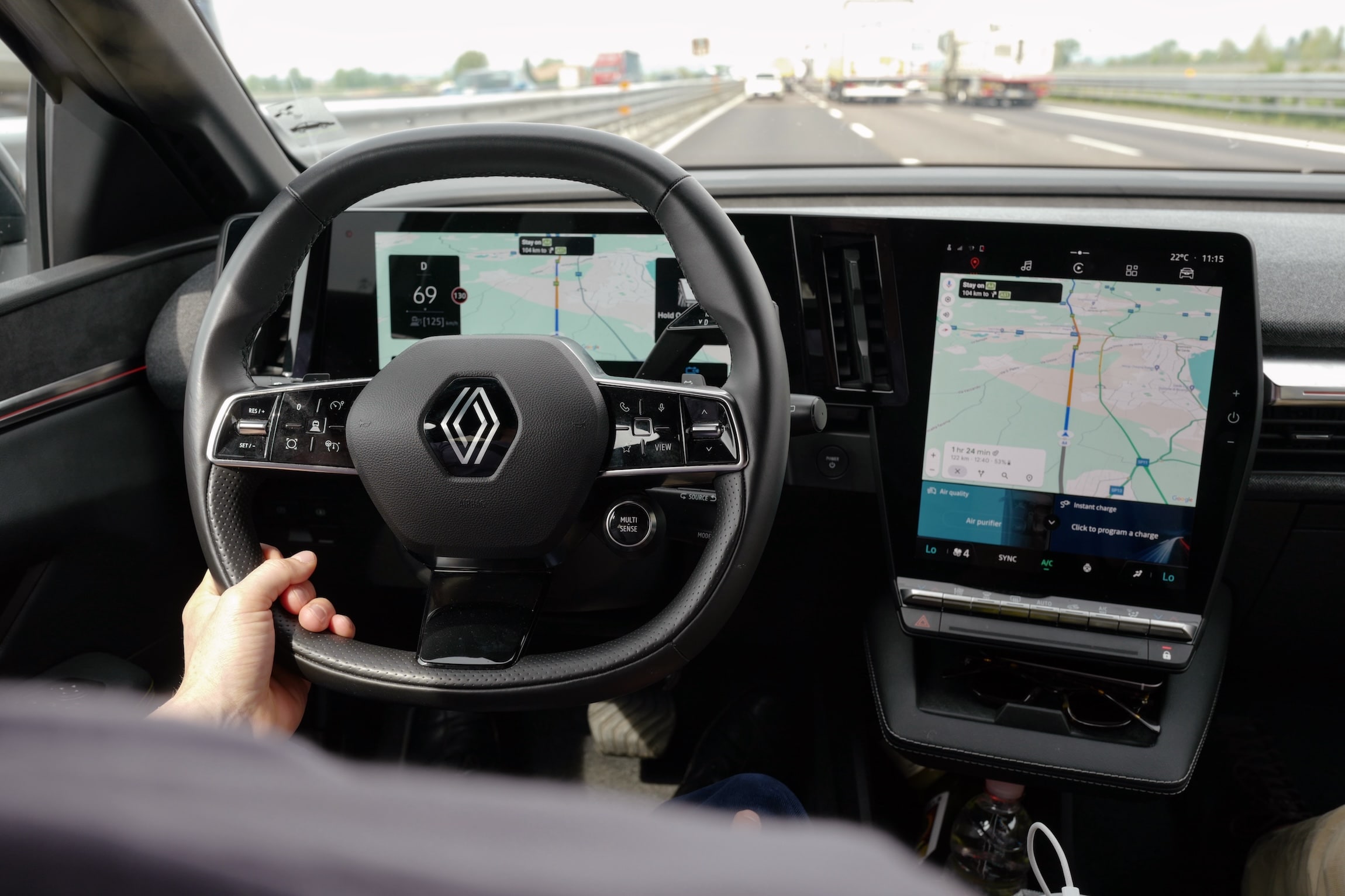
The Mégane feels like a product influenced by over a decade of EV iteration. The Zoe has been ubiquitous in dense urban areas, and this model is picking up traction. On the trip we spotted a few others! It sits a bit too proud for my taste, but considering the growing SUV segment, the Mégane feels just right.
On the inside the driver is presented with controls of virtually all types: hard keys, capacitive keys, touch controls, rotary dials, toggle switches, … It’s all there! I wish the steering wheel controls were physical buttons, but in this market any type of distinguishable control should be applauded. The wheel is a pleasant shape too, reminiscent of the Audi Q4.
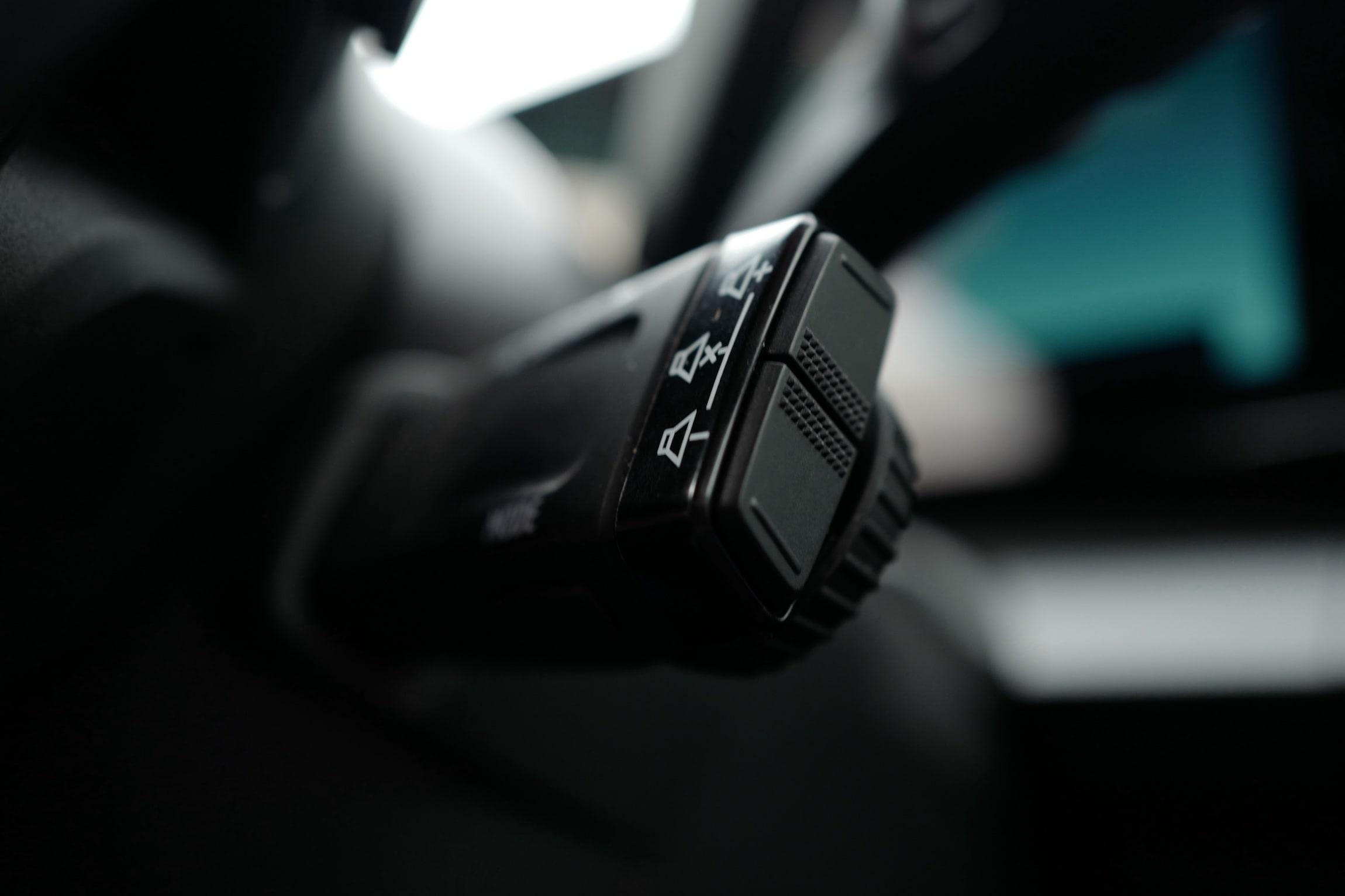
I couldn’t find a way to skip songs without the touchscreen. The steering wheel has an up/down toggle which controls the volume, and behind it is a stalk with a scroll wheel and three buttons for volume increase, decrease and muting. The wheel is to move between songs.
The mental model for interacting with a wheel relates to the intensity of a given unit: volume, temperature, balance. The values should have a minimum and maximum value. In other contexts the same interaction could be that of a focus ring of a camera lens. Moving all the way to one end focuses on elements in the foreground, and turning the other way opens up the focus to infinity.
Renault have, strangely, decided to map the wheel to changing songs. There is no minimum or maximum value, no real predictable way of knowing what happens when turning: which song comes next? Am I at the end of a playlist?
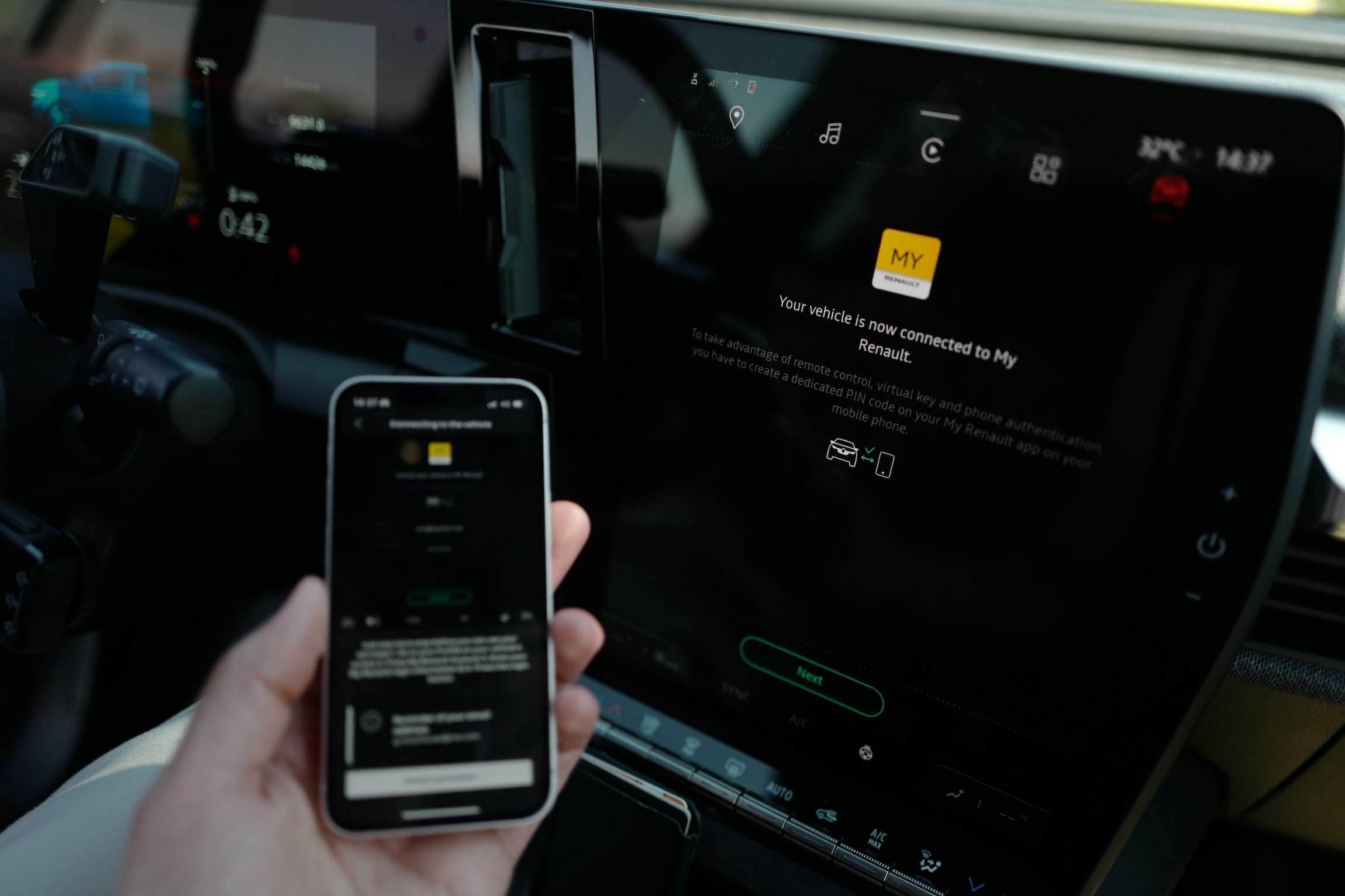
In a rare feat, pairing the car to the app worked in this rental. Although the process was clunky, and required me to crouch in the blinding Italian sun to type the VIN into my barely-visible phone screen, sweating and squinting. I was rewarded with a basic app connectivity, which sometimes showed me the SoC while charging.
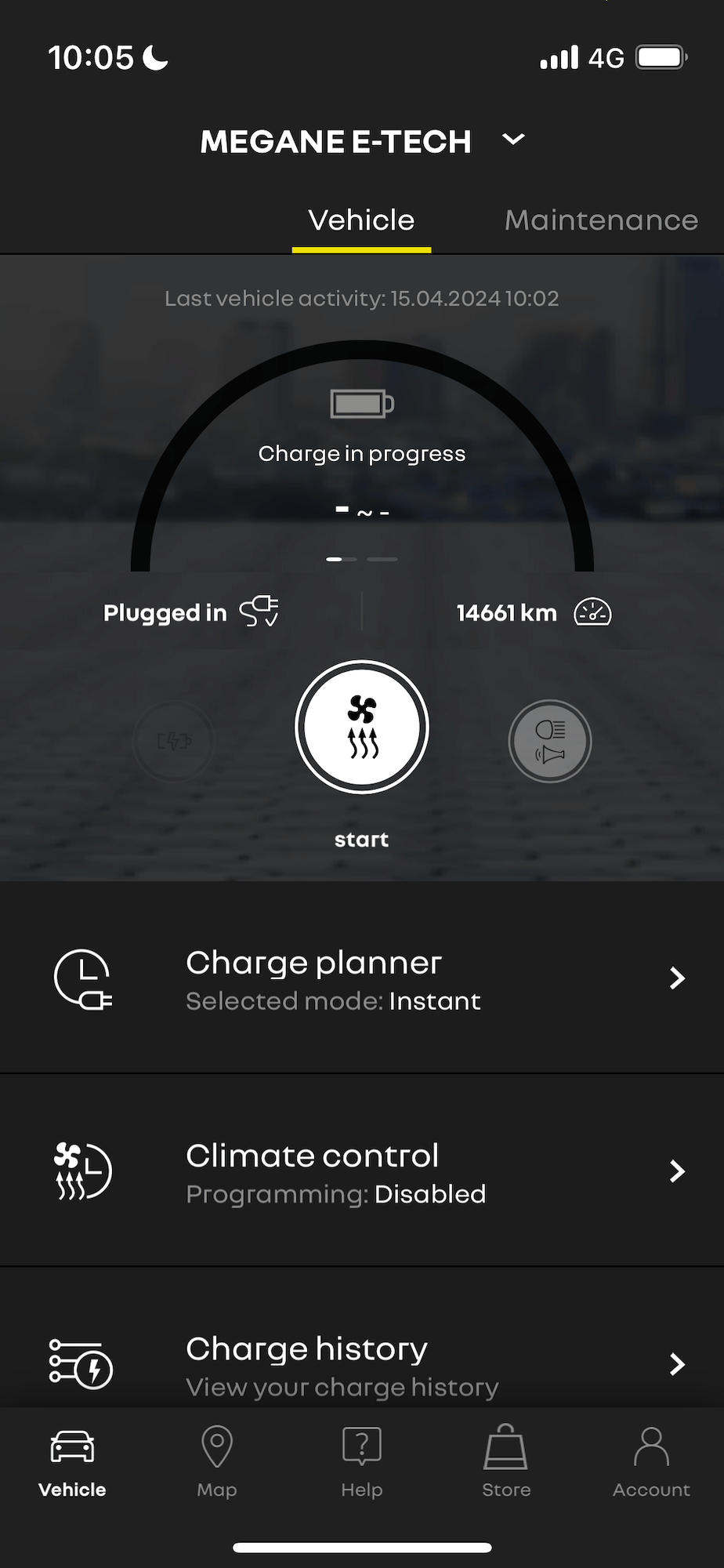
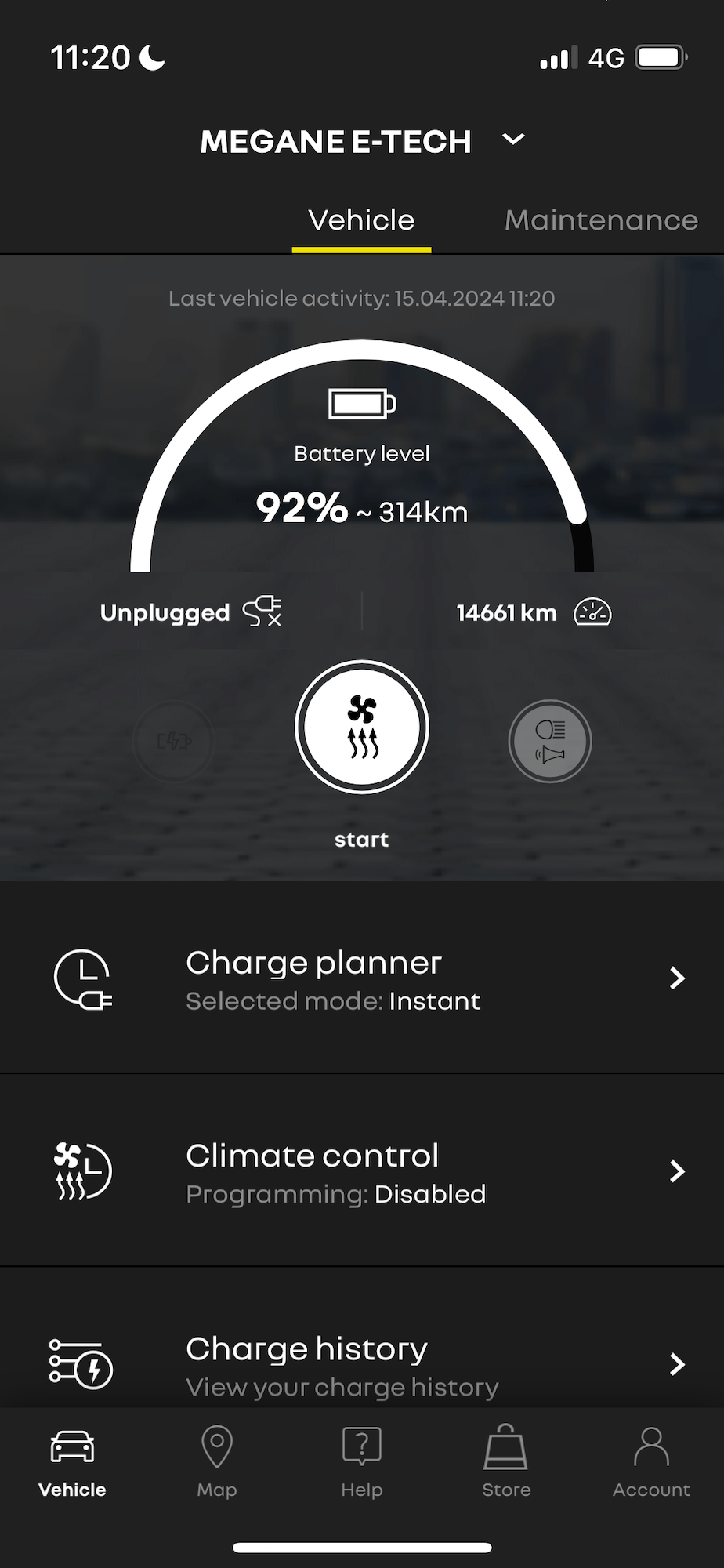
In my reviews I like to complain about the missing app functionality. The role of ownership is changing, and binding any experience to the actual owner of the car is archaic. Everything the car’s native HMI does should be possible through the app, and any passenger should be able to control the car (after a safe pairing process, of course). Physical access to car and key should count as consent.
Renault let me pair my phone, and I’m not sure if the experience was limited because of a fresh installation, the rental experience, or just a poor app. Nonetheless, I was able to see the SoC, which is what matters. I tried the app’s built-in map function to plan a route and charging stop, but in the end reverted to CarPlay. While I understand the dichotomy between the controlled experiences of Renault and Apple, in the end I wish for more integration between any part of my phone (the MyRenault app or CarPlay) and any part of my car (the native HMI or CarPlay) — even if it’s not technically my car. This criticism also extends to Google and Android Auto.
Carmakers are slowly (very slowly) getting better at software, and have large teams dedicated to UX. Even focussed down to a single specific model. Apple and Google cannot optimise their telematic systems even to brands — although the “next generation” of CarPlay tried is trying to give OEMs ways to customise the experience of customers using CarPlay. These companies are already struggling with their internal software, they cannot also dedicate resources to third parties. Should automotive manufacturers completely shift their attention to the integration with iOS and Android phones in lieu of making their own software? Maybe.
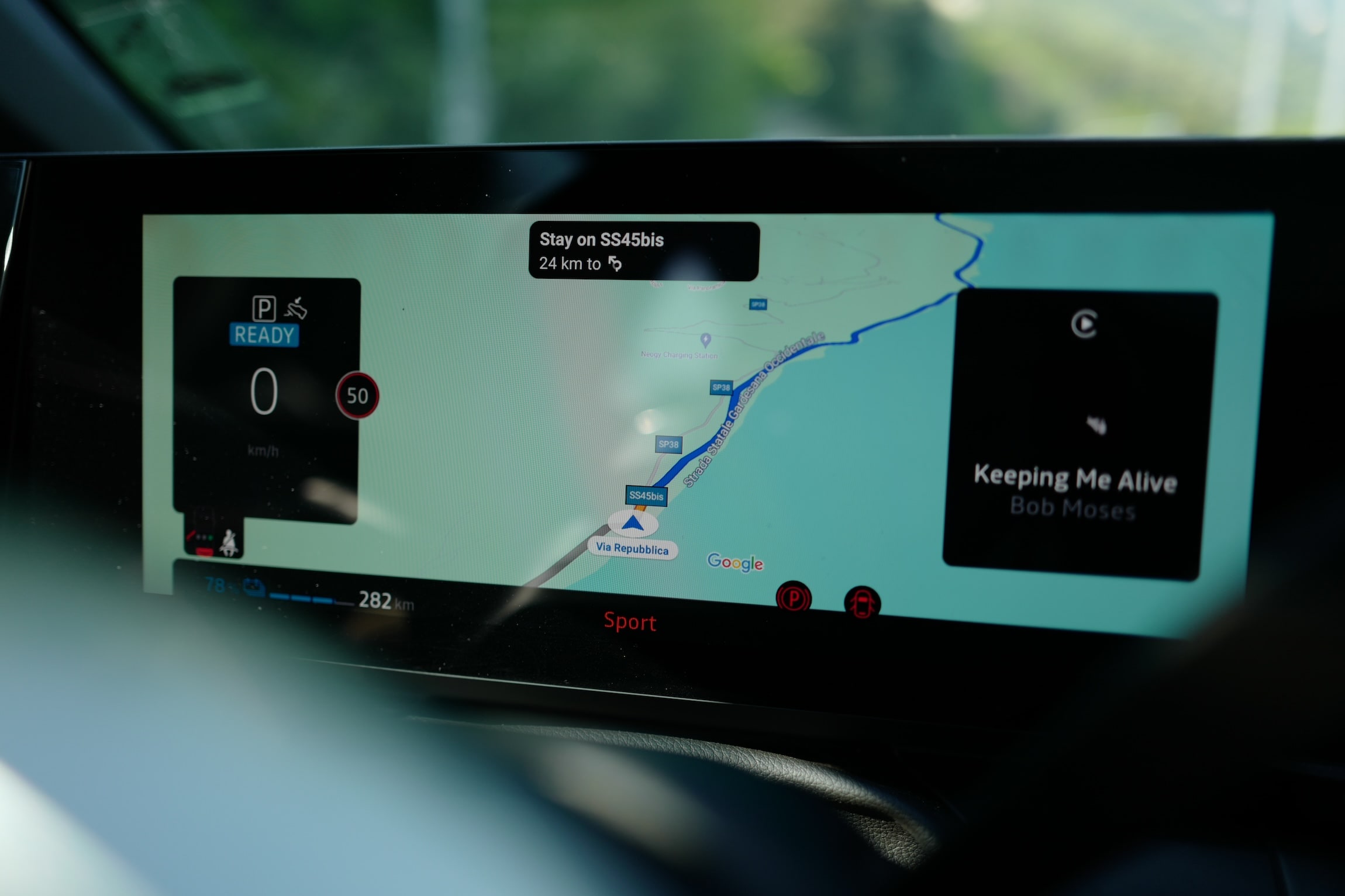
Renault uses Google’s Android Automotive as a software basis. Meaning they can benefit from Google services like the excellent Google Maps, and can build their own experience atop a solid foundation. This same strategy is adopted by Cadillac, Polestar, Volvo, and many others fully integrating Google Automotive Services (GAS), which also lets users pair iPhones via CarPlay. Other companies, like Rivian, use Android Automotive but don’t use GAS or CarPlay, and others again, like BMW, use Android Automotive, don’t use GAS but do have CarPlay.
I think Renault made the right choice of supporting all the things. By giving me the freedom to choose, I mainly used the native system because it let me use Google Maps and Spotify without draining my phone’s battery.
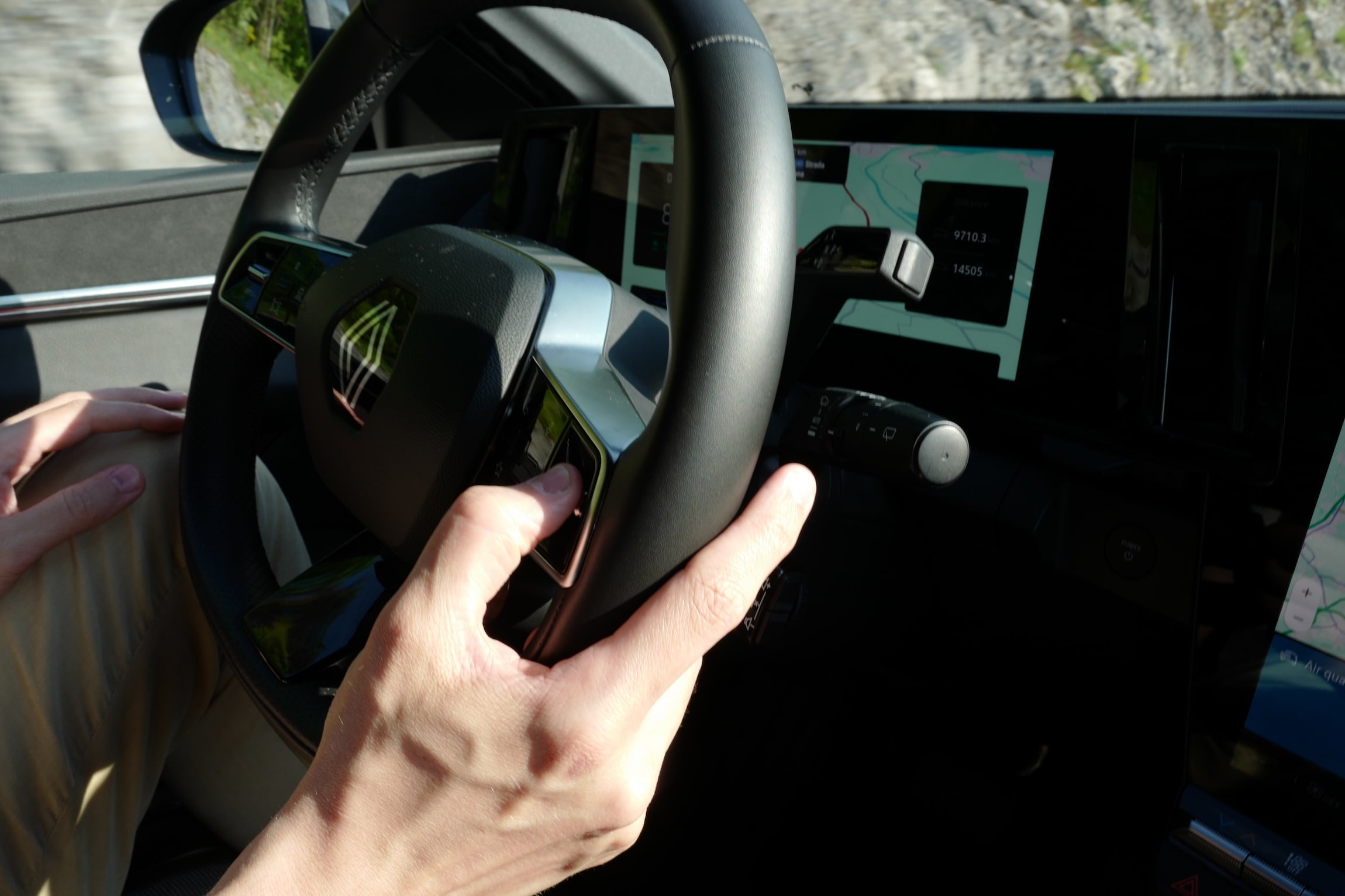
Renault’s HMI is nice. Especially the cluster screen is a positive experience. It uses a full-screen background map when in navigation mode, and overlays it with “cards” on the left and right that can be swiped through. This interaction can be done ergonomically with the thumb via a joystick-like up/down toggle. I just wish the other steering wheel controls were actual buttons that can be physically depressed.
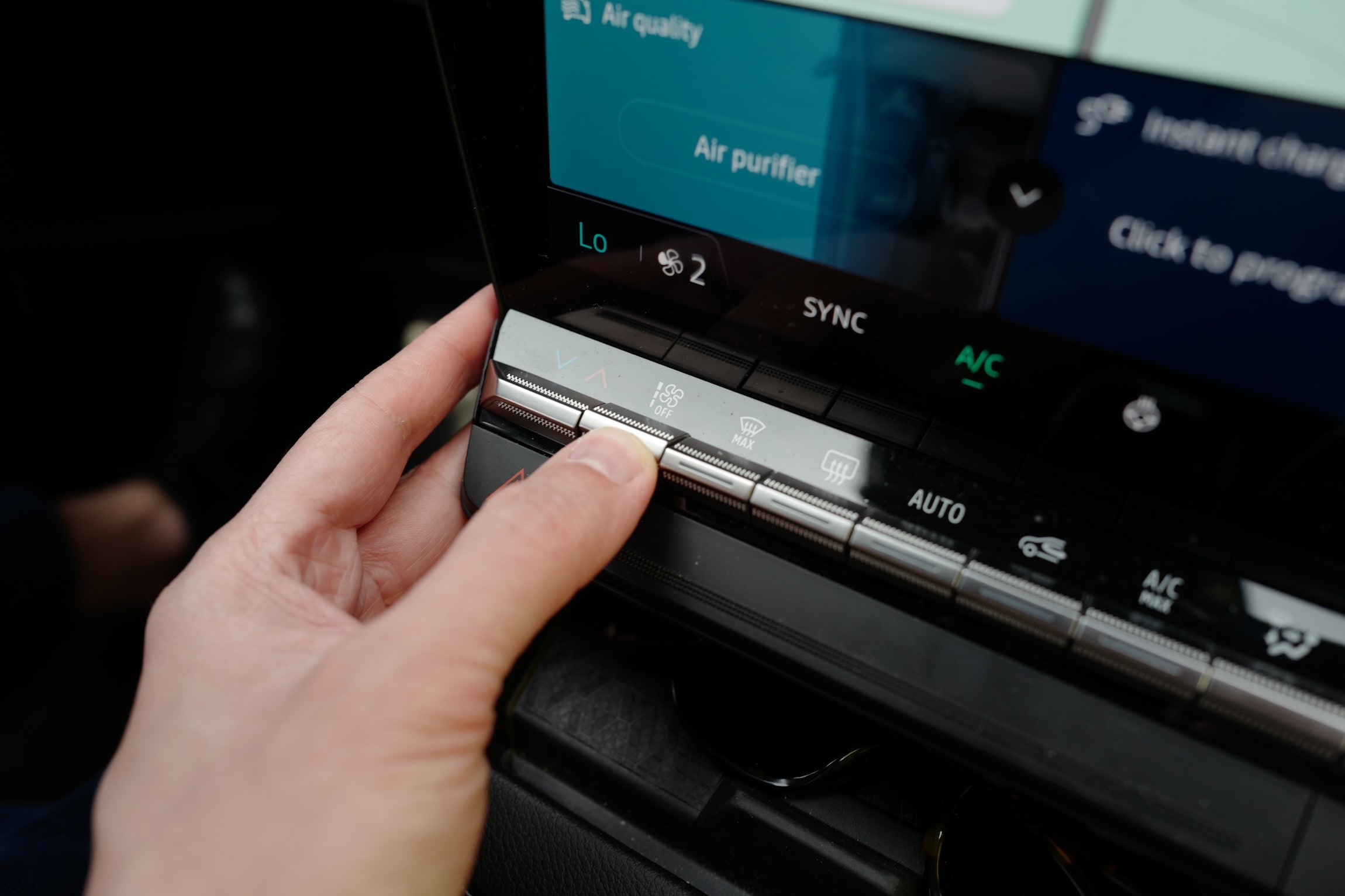
The climate controls are physical! And they work well. We get dedicated buttons for two-zone temperature, fan speed, A/C, AUTO and recirculation, as well as physical shortcuts to airflow direction and the mandatory front and rear windshield defrost buttons. System feedback is done at the bottom edge of the display in a dedicated digital climate bar. All in all, Renault has an elegant hybrid solution in the Mégane.
And below the climate controls is a shelf for wireless phone charging.
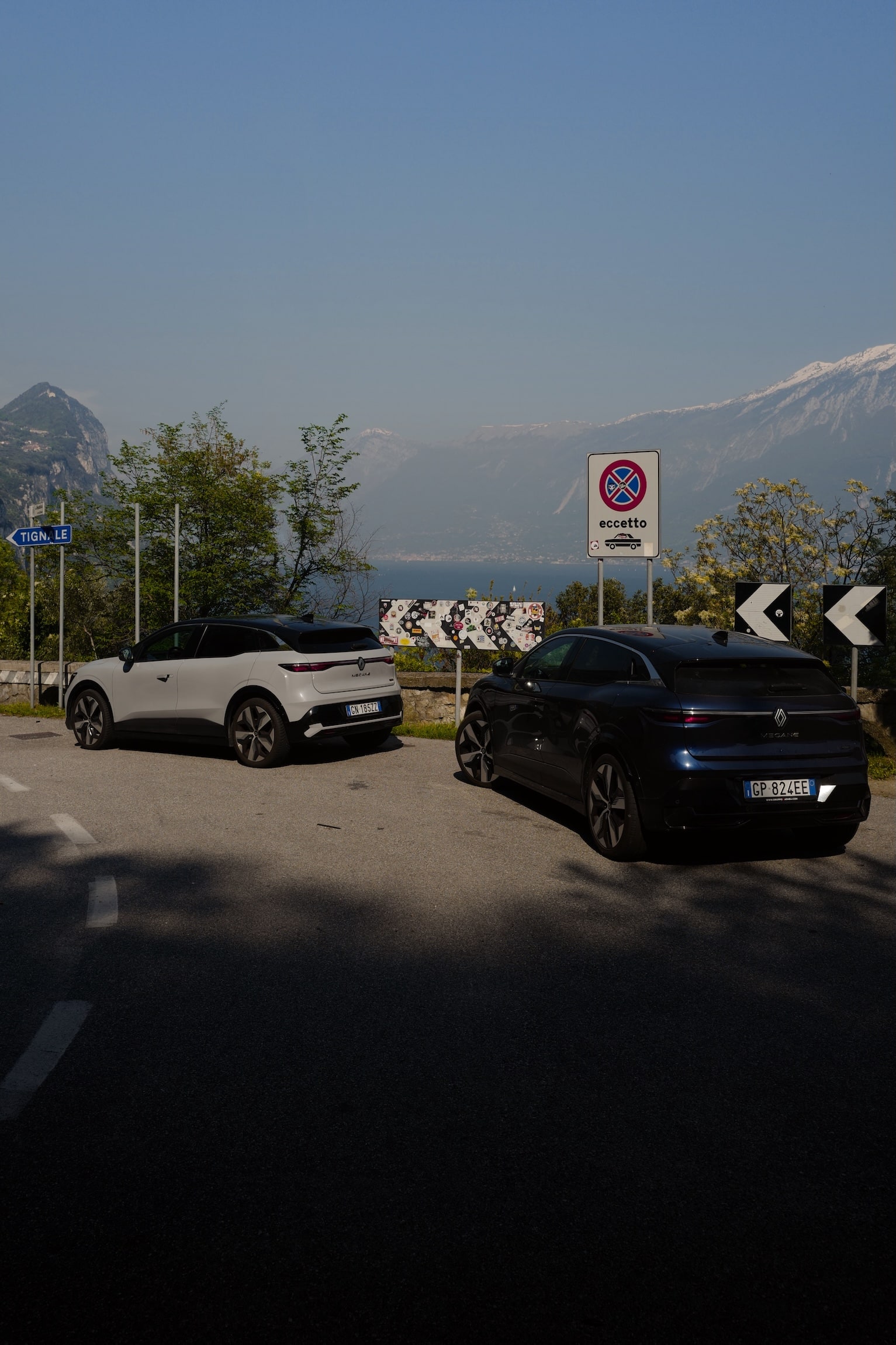
It was a joy taking this car through the winding roads of Lago Maggiore. It’s comfortable for four adults, and yet small enough to be nimble in lakeside villages. I doubt it’s big enough for a longer trip with a family and a trunk full of luggage, but for friends and wine it’s perfect.
I would like to try the Mégane again, even on a longer trip. It fared well on a highway, and really well on the backroads. It looks nice too in its natural habitat of the Italian vineyard.
